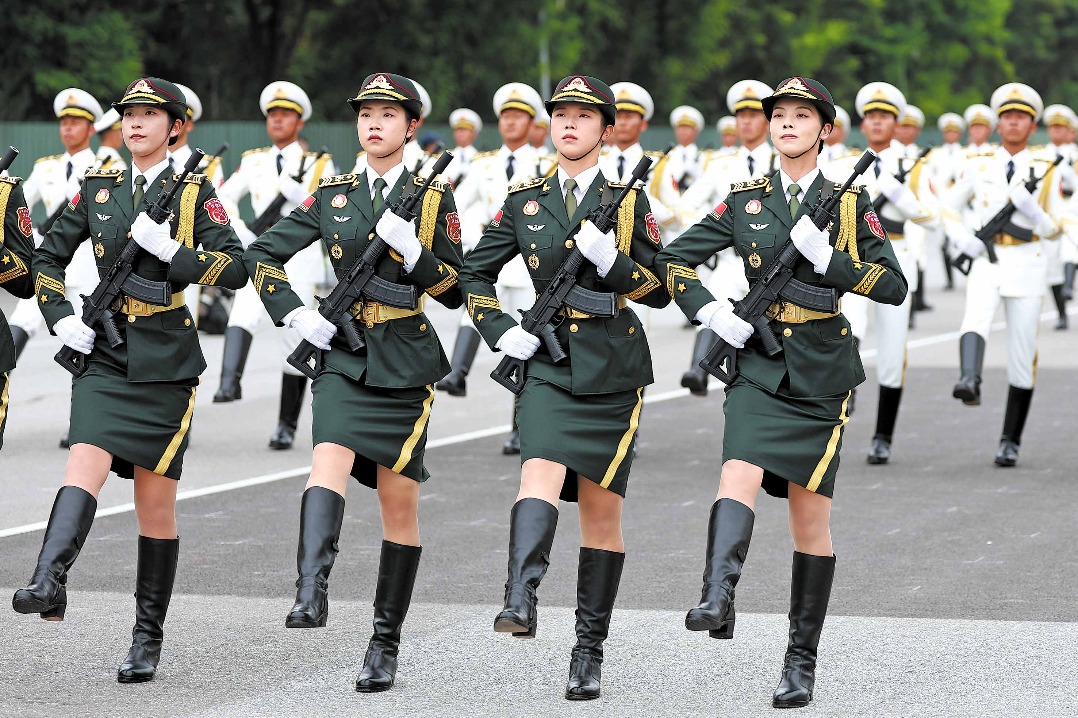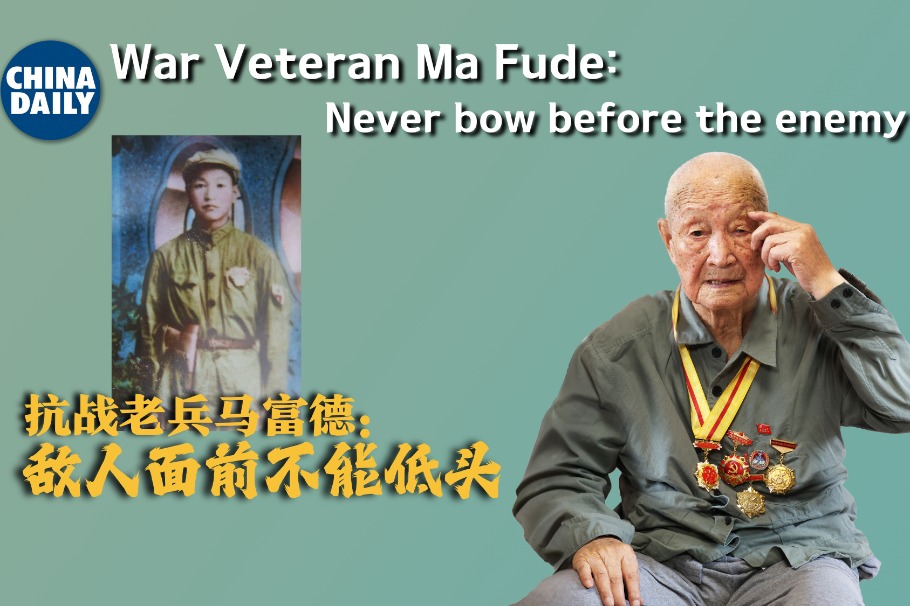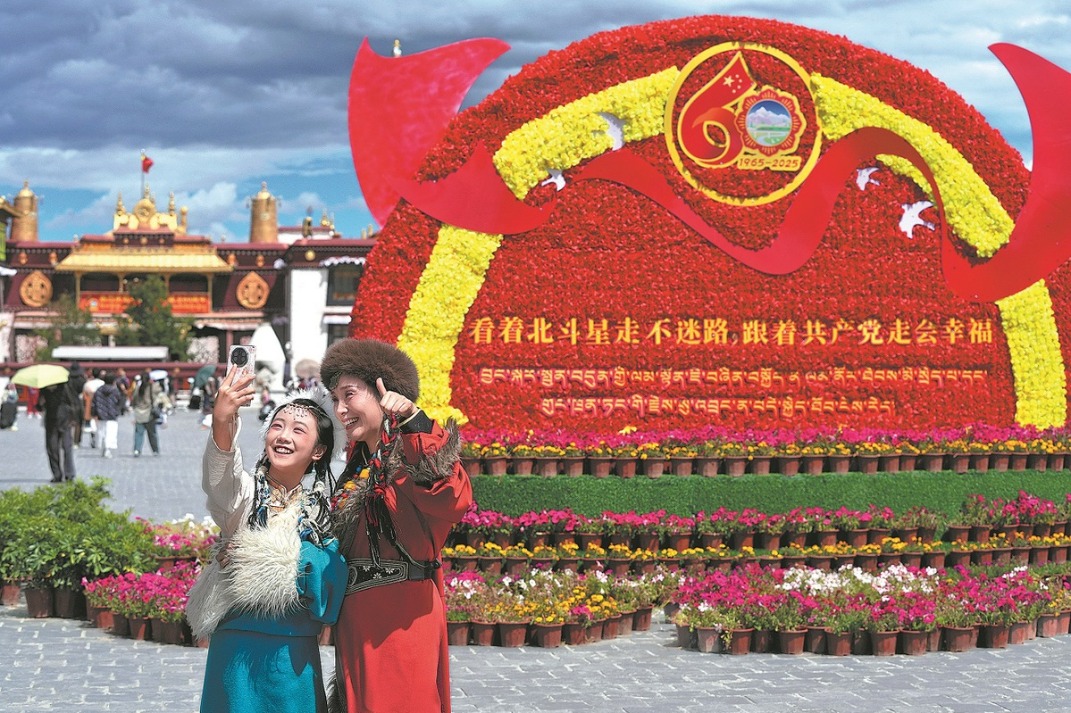Addressing the situation
Qipao maker spots an opportunity to make his version of the quintessential garment, Yang Feiyue reports.

An urge to make things easier for his wife has surprisingly changed the career trajectory of Jin Yi. With a measuring tape and a pair of scissors by his side practically all the time at his workshop in Suzhou, East China's Jiangsu province, Jin, in his 30s, is committed to restoring the glamour of the qipao, a traditional Chinese dress also known as cheongsam, which features a form-fitting cut, high neckline and the slit on the side of the skirt.
"We've been extremely busy after Spring Festival, with orders for custom-made qipao piling up," says Jin, from Xushuguan town, Suzhou.
"Normally, we promised to deliver goods in 10 to 15 days, but now it has to be in 40 to 50 days," he adds.
Jin says he and his team have been working for more than 12 hours every day.
When Jin receives an order, he goes to great lengths to get to know his customer's needs before coming up with pertinent style, color scheme, embroidery and fabric.
"The colors and patterns should vary with different occasions," Jin explains.
For example, a bride would be recommended to wear a bright red qipao with peony and butterfly images, while her mother would be advised to dress in a darker red with more shiny flowers.
"After all is settled, I need to communicate and work with master tailors before delivering a qipao," Jin explains.
The prices vary from 1,500 yuan ($218) to 8,000 yuan, depending on fabrics and embroidering methods.
Jin's present career is a far cry from his previous one at a construction company. That role perfectly suited his civil engineering background after attending a Suzhou college from 2003 to 2006.
His decision to change his job started with a downpour of rain.
Jin's wife is a performer of pingtan, Chinese traditional storytelling and ballad-singing that originated in the Suzhou area. The role requires her to dress in a qipao.
On one occasion, Jin went with her to Shanghai when she needed to have a qipao customized. On their return to Suzhou, they encountered heavy rain, which kept them waiting for a long time at the train station.
Jin then started to wonder if they could find a qipao in the local shops.
They actually found several workshops on Guanqian Street in Suzhou that could make qipao. The local dresses were cheaper than those from Shanghai, but the choice of color and level of craftsmanship were less than desirable, he recalls.
"Almost everything was made by the sewing machine, and the technique of edging the fabric was not refined," Jin says.
That was when Jin saw an opportunity and decided to quit his job.
On one hand, he says he felt that the qipao was a classic and beautiful garment and should be made more available in his home area.
"I also wanted to make my wife happy," he says.
On the other hand, Jin says his previous job was not exactly how he had imagined it.
"I didn't like spending all day on a construction site," he adds.
He first went to the neighboring towns and rural areas in search of older tailors, in the hope of getting the "recipe" to make an elegant qipao.
But the efforts were in vain.
"They happened to enter the trade when the popularity of the qipao was at a low ebb," Jin explains.
Fashion symbol
Qipao first emerged in the 1920s as a loose-fitting dress that was not commonly worn by women as it looked similar to the one-piece gowns that men wore.
It was around the 1930s that the dress started becoming a means of accentuating one's curves as Hongbang tailors from Ningbo, Zhejiang province, who were adept at sewing Chinese tunic dresses and Western-style suits, began pioneering a new style.
It didn't take long for the outfit to become a must-have item for fashion-savvy women in Shanghai, which was considered the fashion capital of the nation.
Shen Huiqin, director of the Shanghai Qipao Culture Promotion Association, says: "Although there are many cheongsam styles in China, the first thing that comes to mind when one mentions this dress is the scene of a woman in a qipao walking along the Bund."
But the "cultural revolution" (1966-76) saw this hotly sought-after dress disappear almost completely as it was deemed a bourgeoisie symbol, according to Shen.
It was only in the 1990s that it started making a comeback.
In 2007, Jin went on a quest of treasure-hunting at antique stores that were scattered across the country.
"I figured I could get some clues from the original qipao," he says.
He still remembers his first find at a local antique shop in 2007. It was a navy blue qipao from a period between the 1910s and the 1940s.
Then, he found a few experienced tailors who were good at making traditional cloths to decipher the code by carefully dismantling the delicate dress.
"We looked into its materials and details like rolled hems and buckles," Jin says.
Then, many secrets started to reveal themselves.
"Take the small buckles for example, they have managed to stay sturdy and upright after decades, because of the application of wax," Jin says.
He came upon the discovery after he accidentally found a sticky substance under his fingernails when studying the historical qipao.
After looking into it, he found the wax was used to seal in the "thick paste" made of cornstarch.
"This starch is necessary during ironing and pressing the silk to keep it firm. However, it is lost during washing, so wax has to be applied," Jin says.
As Jin continued to collect antique qipao, more traditional methods were brought to light.
"We found the button buckles had also been pressed by an iron plate overnight to make them more resistant against deformation," Jin says.
Although this traditional qipao-making process may seem cumbersome, it has ensured the clothes maintain their shape even after years of use and multiple washing, he adds.
It cost Jin more than 20 old pieces of qipao before he grasped the delicate techniques.
"Fortunately, a regular old qipao was not that expensive as it is today, and it only cost a few hundred yuan back then, so I could afford it," Jin says.
Devotion to craft
He also picked up cloth-making techniques.
"The master tailors understood the structure of tailoring very well, and I learned and practiced by their side every day," Jin recalls.
He came to realize that it might be relatively easy to learn all the techniques, but it takes a long time to get them down to a fine art.
"I was impressed by their (master tailors') serious attitude and striving for precision," Jin says.
"They focus on every detail and make sure it's done perfectly."
In 2010, Jin was able to independently craft qipao, and his first work was a light beige dress with black flowers.
"It was for my wife, and she loved it," Jin says.
The success fueled his passion to continue to study and hone his skills.
The qipao in Suzhou varies from its counterparts in Shanghai, in terms of cloth choice and patterns, because of the differences in local culture.
Shanghai-styled qipao highlights layered color schemes on the edges, but the Suzhou-styled tends to use just one color, he explains.
"Even the delicate embroidery is done with thread that matches the color of the fabric," Jin says.
"The distinguishing feature of the traditional Suzhou-styled qipao is that it may not look particularly special from afar, but upon closer inspection, one can spot delicately embroidered flowers on the collar or hem, which gives off an air of sophistication and reflects the reserved nature of Suzhou people."
Yet, the technique is almost the same.
"We are sticking to the traditional methods popular in the period from the 1910s to the 1940s," Jin says.
He has also tried to integrate yunjin and songjin, two kinds of ancient brocades, with an aim to bring new vitality to the qipao.
His dedication and skills have earned him the title of an intangible cultural heritage inheritor of handmade qipao by Suzhou's culture, radio, television and tourism bureau in January.
He has attended various lectures at local communities and schools to popularize the traditional dress and its cultural significance.
His collection of vintage qipao has also grown to more than 600 pieces from across the country, especially Shanghai, Hong Kong and Jiangsu's Suzhou and Nanjing.
It has inspired him to expand his collection to include qipao-related items, such as accessories, needlework and old-fashioned iron.
"I'd like to build a museum of traditional qipao," Jin says.
"I'm working on it now, and hopefully more people will better appreciate the qipao."
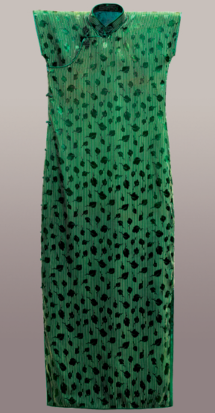
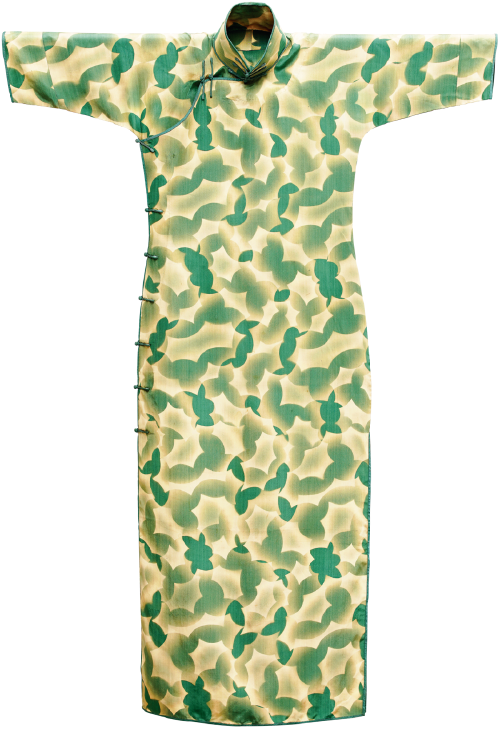


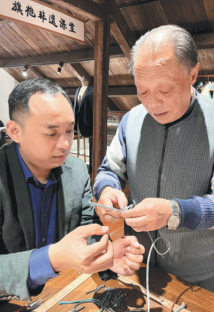

Today's Top News
- Putin-Zelensky meeting not being planned, intense mutual attacks persist
- China, Japan, ROK urgently need an FTA
- From humanoids to parallel intelligence
- Shared wartime history unites nations, envoy says
- Mutual trust reaffirmed in visit
- 12 dead, 4 missing after bridge collapses in Qinghai

















